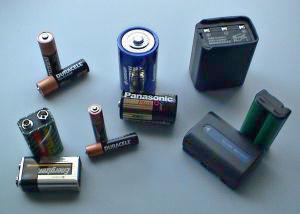Teh agricultural sector’s shift toward electrification has encountered a significant hurdle as manufacturers grapple with range limitations in battery-powered tractors. While these eco-friendly vehicles promise reduced emissions and operating costs, farmers express growing concerns about their ability to complete full workdays without recharging. This challenge highlights the complex balance between enduring farming practices and practical operational requirements in modern agriculture. Farmers worldwide are grappling with a significant challenge as they evaluate the latest innovation in agricultural machinery.While the promise of zero-emission farming equipment has generated considerable interest, practical limitations are causing hesitation among potential adopters.Initial field tests reveal that current models can operate for approximately 4-6 hours on a single charge under optimal conditions. This duration falls short of traditional diesel-powered tractors, which can run for 12-14 hours continuously with a full tank. The restricted operational time particularly affects large-scale farming operations where equipment typically runs throughout daylight hours during critical periods such as planting and harvesting.
Industry experts point out that weather conditions and workload considerably impact battery performance. Heavy-duty tasks like plowing or operating with multiple implements drain power more rapidly, potentially reducing working time by up to 40%. Cold weather operations present additional challenges,as battery efficiency typically decreases in lower temperatures.
Charging infrastructure represents another crucial consideration. Most farms lack the necessary high-capacity charging stations, and installation costs can range from $20,000 to $50,000. Rural locations often face limitations in electrical grid capacity, potentially requiring significant upgrades to support rapid charging systems.
Manufacturers are actively addressing these concerns through various technological solutions. Current development focuses on hot-swappable battery systems, allowing farmers to quickly exchange depleted batteries for fully charged ones. Some companies are exploring solar charging stations integrated with farm buildings to provide sustainable charging options.
Cost comparisons indicate that while electric tractors command a 30-40% premium over conventional models,operational savings could offset the initial investment within 5-7 years. Reduced maintenance requirements and lower energy costs contribute to long-term economic benefits, though these calculations assume current electricity prices remain stable.
Environmental benefits remain compelling, with each electric tractor potentially reducing carbon emissions by 75-90 tons annually compared to diesel alternatives. Government incentives in several countries are making the transition more attractive, offering subsidies ranging from 20-40% of the purchase price.
Real-world adoption patterns show mixed results. Smaller farms focusing on specialty crops have reported success with electric models,particularly in operations under 200 acres. Though, larger commercial operations express concern about operational reliability during peak seasons.
Manufacturer data suggests that next-generation batteries could extend operating times by 50-75% within three years. Advanced energy management systems and more efficient motors are under development, promising improved performance across varying conditions.
Agricultural technology analysts emphasize that the transition to electric tractors represents a significant shift in farming practices, requiring careful consideration of individual farm needs, infrastructure capabilities, and operational patterns. Success stories from early adopters demonstrate viable applications in specific contexts, while highlighting the importance of realistic expectations regarding current technological limitations.














